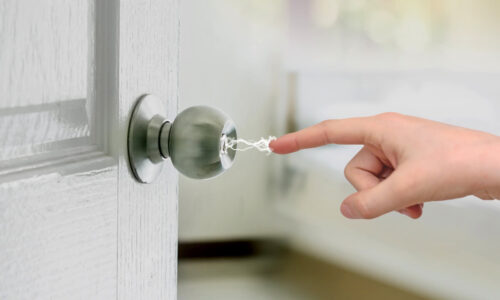
Wet in the summer, dry in the winter.
It’s no secret that high humidity is one of the biggest factors when it comes to your comfort in the summer months but did you know that low humidity could be causing you similar issues in the winter? The cold dry air of the frozen tundra gets even drier the more that your furnace is running. Have you ever noticed an increase of static shocks or nose bleeds in the winter? This is a result of the dryness of the air not only outside but also in your home.
How to control humidity in your home.
Many people are accustomed to running a dehumidifier in their basements during the summer and your air conditioner essentially works as a large dehumidifier for the rest of the home. Those devices are designed to remove humidity but what can be done in the winter when the air is so dry? Adding a humidifier to your ductwork will add humidity back into your home and help keep you healthier and more comfortable.
Benefits of balanced humidity include:
- Reduces static shocks: Dry air makes for the perfect condition for the build of static electricity. Increasing the humidity will prevent the static from building up.
- Prevents illness: Viruses thrive and transmit in drier climates. A home kept at a proper humidity level will help to prevent the viruses as well as sore throats and sinuses.
- Proper wood care: Real wood will swell and shrink based on the humidity of the air. Furniture, hardwood floors, framing, and more can warp and crack if not maintained at an ideal humidity level.
- Reduce energy bills: Increased humidity will make the air more comfortable at lower temperatures. 70 degrees in Florida and 70 degrees in Arizona feel very different and that is due to the level of humidity in the air. You will find that you can usually run your furnace 1-2 degrees lower and still feel comfortable when you have proper humidity.
What is the ideal humidity?
There is no magic number but rather a range of humidity that your home should stay in. Anything between 30-45% during the winter months is considered good. Below 30% and you will start to see some of the issues discussed above. As you start getting above 45% you can start to see condensation on windows and to potential for mold growth.
How does a humidifier work?
A humidifier is a device that is installed onto your ductwork near the furnace and is connected to your water supply. There is a sensor in the ductwork that samples the air and passes water through the humidifier to add humidity when it is needed. Older models of these devices required a control located near the thermostat to be adjusted based on the outdoor temperature however the modern models from Aprilaire use a temperature sensor outside and will automatically adjust its settings to keep you comfortable.
